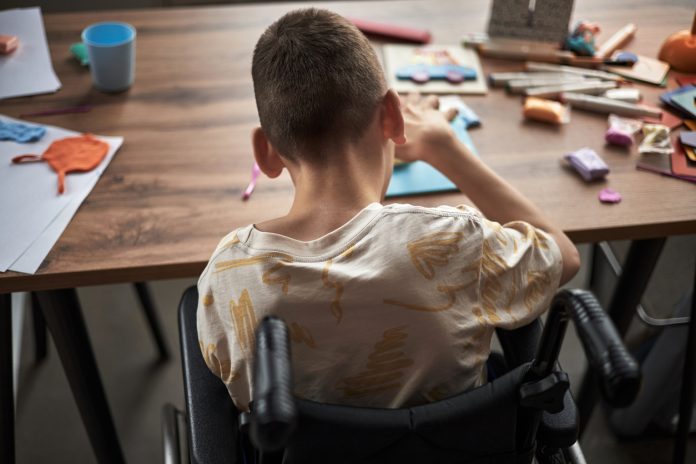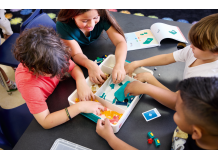Ed Robbins, the CEO of Fresh Start in Education, believes that a one-size-fits-all approach to special educational needs and disabilities (SEND) will not be effective. He warns that policymakers may be repeating past mistakes by assuming that inclusion means every child should learn in the same type of environment
The Education Committee’s recent report on ‘Solving the SEND Crisis’ is one of the most grounded and constructive pieces of work we’ve seen on this issue in years.
Special educational needs and disabilities (SEND)
The call for a cultural shift in how we view and support children with Special Educational Needs and Disabilities (SEND) is long overdue, as is the recognition that the system as it stands is not working.
The report makes it clear: too many children are being let down, parents are worn out battling for support and schools are overstretched and underfunded. At the heart of the recommendations is a vision of inclusion, with every child being able to thrive within a mainstream setting.
However, while this vision is well-intentioned, it’s also where the system risks falling into the same trap once again of assuming that inclusion means all children must be educated in the same type of environment.
Inclusion isn’t the same as integration
There is a growing narrative that if we can just invest enough into mainstream settings, every child will be able to stay in school, learn alongside peers and flourish. But inclusion isn’t about geography – it’s about outcomes.
True inclusion means every child’s individual needs are met, wherever they are best placed to learn. That might be in a mainstream classroom, an alternative provision setting, or at home with wraparound support. A blanket push to put all children into the same model of education, however inclusive the intention, risks doing the very opposite of what inclusion is supposed to achieve.
Every child is different, yet our current system is built around sameness, with narrow definitions of success, standardised testing and environments that assume all children process and respond to learning in the same way. This is not only outdated but also damaging.
The system has changed, but hasn’t adapted
We are educating a profoundly different population of young people today than we were even 15 years ago. Medical advances mean more children with complex physical and neurological needs are surviving birth and entering classrooms. At the same time, awareness and diagnosis of conditions like ADHD, autism, sensory processing disorders and attachment trauma have increased significantly.
This isn’t a ‘problem’ to be solved, it’s a reality that needs to be accepted, and it requires a system that’s capable of responding with flexibility, nuance and care.
Despite this, instead of reshaping the model, we’ve tried mainly to squeeze these children into an old framework and, unsurprisingly, it hasn’t worked. Too many children are placed in unsuitable environments, with 98 per cent of leaders from mainstream settings stating they lack the resources to meet the needs of all their SEND pupils adequately. (1) The result is spiralling exclusions, school refusal, poor mental health and overworked staff.
We swung too far, and now we’re swinging back without a plan
In recent years, alternative provision [AP] has become the pressure release valve for mainstream systems that cannot cope. For some children, this was a life-saving shift – environments that understood them, supported them and helped them re-engage with learning. But AP also became a catch-all, sometimes used too quickly, too widely or without proper accountability.
Now, with rising costs and political pressure, we’re seeing the pendulum swing back in the other direction – a renewed push to get children ‘back into school’. Again, the idea is great in theory, but what does this look like in practice?
How do we ensure a mainstream school has the time, training, staffing and physical environment to support a child with significant behavioural or sensory needs? What is the plan when that child hits a crisis in a corridor, or can’t regulate in a noisy classroom?
The concern is that we are trying to move children into an environment before it is ready for them.
A bespoke system should be the goal
Clearly, the ideal scenario would be a flexible, well-funded system where every child receives bespoke support tailored to their learning style, needs and background. One where education isn’t about where you are, but what you receive. However, we currently don’t have that system.
Instead, we have a fragmented patchwork of provision, wildly inconsistent across local authorities, with some children waiting over a year for Education, Health and Care Plans [EHCPs], others falling through the cracks entirely, and professionals burnt out from trying to hold it all together.
Yes, there needs to be a culture and funding shift, but we also need a mindset shift. We need to move away from simplistic notions of inclusion towards a more honest acceptance that real inclusion is complex, costly and absolutely worth it.
What needs to happen now
Policymakers must stop thinking in binary terms of ‘mainstream versus alternative’, ‘in school versus out of school’ and ‘inclusion versus exclusion’. The reality for many children is that their journey may include all these settings, and none of them are failures if they are the right fit at the right time.
A truly inclusive system needs to embrace flexibility, not uniformity. That means committing to multiple, equally respected pathways through education, not just upgrading mainstream provision, but investing meaningfully in alternative and therapeutic models, hybrid approaches and outreach services that meet children where they are.
A system that reflects the complexity of real lives
None of this can be delivered without the people to make it happen. The current workforce is overstretched, under-resourced and often under-trained to meet the diverse needs of today’s classrooms. Any serious reform must come with a properly funded, long-term workforce strategy that embeds training in trauma-informed practice, neurodiversity and adaptive education as standard rather than an add-on.
Inclusion cannot be achieved in isolation from health and care, either. Too often, children and families are caught in a web of disconnected services, with schools struggling to secure the proper support. A joined-up approach to commissioning across education, health and social care is essential to avoid the delays and disputes that continue to dominate the SEND landscape.
Ultimately, we need a more realistic and human-centred definition of inclusion that prioritises outcomes over settings, relationships over labels and emotional safety over standardisation.
The Education Committee’s report is a step in the right direction. Still, unless we ground its ambition in the messy, complex realities of children’s lives and build a system that honours that complexity, we risk delivering yet another vision of inclusion that exists only on paper.











